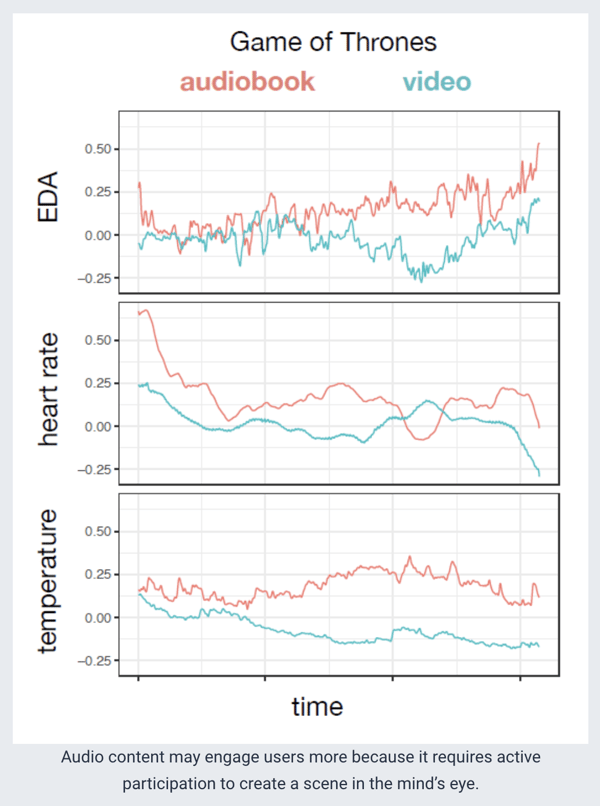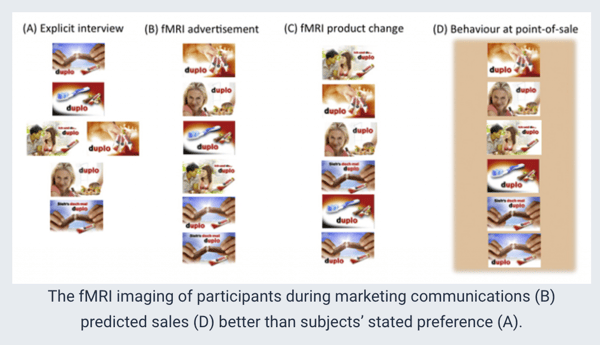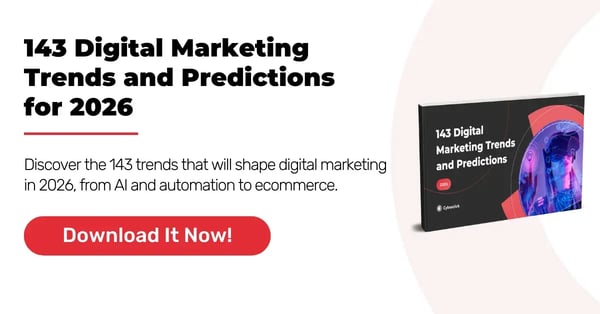Neuromarketing can give marketers important insights, like how ads influence a person's decision process, how pricing affects a consumer's willingness to make a purchase, or the factors that impact consumer behavior. Neuromarketing examples are all around us if we take the time to look for them.
In this article, we’re sharing some neuromarketing studies that could help guide your next marketing campaign. Let’s dive in!
Neuromarketing Definition
Neuromarketing applies neuroscience to the marketing field. It looks at how consumers' brains work and what insights we can take from that to promote brands, both at the promotional and product design levels.
Neuromarketing adds a scientific dimension to marketing and advertising. It is based on conducting laboratory experiments using the scientific method to gain knowledge about the relationship between the brain and buyer decisions.
10 Examples of Neuromarketing
1. Ad Design Isn’t the Biggest Indicator of Success
As marketers, we often wonder how we can most effectively use our budget. Francisco Muñoz-Leiva, Janet Hernández-Méndez and Diego Gómez-Carmonac set out to answer this question with a neuromarketing study that measured the effectiveness of advertising in the tourism sector through eye-tracking technology.
The study compared the visibility and recall of advertising banners on three different sites: a hotel blog, Facebook, and TripAdvisor. The study monitored metrics of eye movement and promotional recall.
The result was that the Facebook banner generated the most attention and recall among the participants. Although the banner was in the same position on all three sites, the Facebook ad attracted participants' attention more frequently and for longer periods of time. This was attributed to the complexity of the website design and how it influences viewing patterns. Facebook had less content on the page than TripAdvisor or the blogs so it got the best results.
This shows us that website design plays an important role in the effectiveness of your ad, not just the design of the ad itself.
However, it is also important to note that in all three cases the visibility and recall of the ad were low, suggesting that display advertising is not the most effective way to promote brands.
2. Different Payment Methods Generate Different Emotions
The research team also wanted to find out how the payment methods available on a website influence the trust of potential buyers. This is a pressing issue for ecommerce brands.
The study focused on two main payment methods: PayPal and credit cards. All 30 participants made simple online purchases, and their responses were measured.
The conclusion of this study found that consumers perceived PayPal as a safer, more rewarding, and more effective payment method. In contrast, credit card-activated areas are associated with negative and dangerous events.
3. Users Associate Good Web Design with Trustworthiness and Quality
We’ve always known that first impressions are important. Now, thanks to Gustav Bergman and Felix Noren's neuromarketing study, we understand why.
These researchers created various web pages using different combinations of colors, backgrounds, trust stamps, and contact information and showed them to the participants for 7 seconds. Participants had to answer "yes" or "no" to the question: "Do you think this online store is trustworthy?"

In addition to recording responses, they also took into account the time it took users to respond to different versions of the page (31 total). Its main conclusions were as follows:
-
There is no relationship between the time it takes to respond to a page and the level of trust it generates.
-
The factor that most influenced the trust of the participants was the amount of time spent on web design. The more effort they put into creating a good design, the more confidence the page generated. Therefore, it is definitely worth investing in quality design.
4. Our Brains Pick Up More Than We Realize
One of the most cited studies in the field of neuromarketing shows how neuroscience can be used to design more effective public service announcements.
Emily Falk, the study's author, wanted to find out to what extent the ventromedial prefrontal cortex in the brain was able to predict call volume in response to anti-smoking campaigns from the National Cancer Institute in the United States.
The study tested three television ad campaigns that advertised a special phone line for people who wanted to quit smoking tobacco. They recorded brain responses to ads, participants' perceptions, and the number of actual calls generated.
The result was that there was no relationship between the perceived effectiveness of the ads and their actual result, but brain activity was related to the number of calls received. That is, our brain activity better predicts the effectiveness of advertising than our own conscious perceptions.
5. Package Design Impacts Consumer Purchase Decisions
Chips Ahoy conducted a study on its packaging and realized that it had a problem: consumers declared that it was difficult to read due to the colors used and the image being neutral or boring.
To solve this, it organized a study that included eye-tracking techniques to identify how consumers reacted to different designs. Based on the results, they implemented several key changes to their packaging. The cookies are now sold in a tube that can be resealed, the text and colors have been improved, and the cookie's image is more fun and engaging.

6. Inspiration Varies for Different Audiences
In recent years, superheroes have gained a great deal of popularity. For this reason, the BBC partnered with iMotions, Screen Engine/ASI, and the Women's Media Center to study the perception of female superheroes among adolescents of both genders. The objective was to find out how the representation of male superheroes and female superheroes influenced adolescents' self-esteem and self-confidence.
The researchers tested several trailers of television shows starring characters of both genders. These shows included The Flash, Supergirl, Wonder Woman, and Luke Cage. Participants visualized the trailers while researchers measured their physical reactions, facial expressions, and visual attention using eye-tracking techniques.
The study found that adolescent girls respond much better to depictions of female superheroes. Additionally, when female protagonists were sexualized, girls stopped paying attention.
This gives insight into how to treat characters in stories and advertising in order to generate a positive reaction among the audiences you want to reach.
7. Audio vs. Visual
Intuitively, many of us tend to think that video has a stronger emotional impact and efficacy when it comes to storytelling. On the other hand, the current podcast boom indicates that audio content is also on the rise. A recent neuromarketing study from University College London compared the emotional impact of the two.
The researchers looked for equivalent video and audiobook scenes from different book/movie combinations, such as Game of Thrones and The Silence of the Lambs. They selected scenes with great emotional impact and in which the video and audio versions were almost identical.
The conclusion showed that users' perception and their actual physical responses were not aligned. On average, the participants stated that they found the video 15% more interesting, but when they listened to the audiobook, their pulse rate was faster, and their body temperature and skin conductivity rose.

The explanation proposed by the researchers is that users perceive listening to a story as a shared experience and, therefore, have a greater emotional response.
8. The Brain Can Predict Sales
Researchers Simone Kuhn, Enrique Strelow, and Jurgen Gallinat conducted a very interesting neuromarketing study in which they compared different ways of predicting product sales with actual results.
The study was carried out with a sample of 18 habitual chocolate consumers who were shown a product image and 6 related advertisements, including a control image. Their reactions before, during, and after viewing each image were measured by an MRI. Next, they were asked to sort the images according to their preferences.
Based on all this data, the researchers created 3 sales predictions: one based on the participants' stated preferences, one based on their brain activity while looking at ads, and one based on their brain activity when viewing the product before and after seeing ads.

The product was then displayed alongside ads in different supermarkets for a week, to compare the actual sales to the predictions. The most successful result was the one based on brain activity when viewing the ads, and the one that failed the most was the one based on the participants' responses. Once again, this shows that neuromarketing outperforms traditional market research when it comes to predicting sales.
9. Price Framing Impacts Consumer Decisions
Comparing prices is always an important part of the buying process, so price framing can have a major impact on how consumers perceive a product. A number of studies have shown that consumers will actually spend more when the price difference is emphasized rather than the total price.
What exactly does that mean? Let's say you are selling a phone that costs 350 dollars, and you have additional accessories that people can buy to go with it, such as a case, a portable power bank, etc. People will be more likely to purchase these items if they are advertised as "for only 20 dollars more, get a power bank." They are less likely to purchase if the advertisement says, "For 370 dollars, get a power bank included in your purchase." How the price is presented makes a difference in the consumer's willingness to spend.
This works because it shifts the buyer's focus to a lower number, making the purchase seem like a good deal. It also presents the price in a simple way, sparing people from having to do any complex calculations that could make them hesitate.
10. Product Framing Influences Perceptions
Finally, let’s examine a study about one of the most useful cognitive biases for marketers: the framing or presentation of a product.
Jia Jina, Wuke Zhangc, and Mingliang Chen investigated how framing influenced consumer care and decision-making around a product. To do this, they measured the reactions to descriptions of wool coats presented in two different ways: with a positive framing (showing the percentage of wool in the product) and with a negative framing (showing the percentage of synthetic fibers).
The result was that product presentations that emphasized negative framing generated more attention at first but made decision-making more difficult. That being said, positive framing improved perceptions about the quality of the product.
Although these conclusions are not too surprising, it is interesting to verify the effects of this type of marketing technique in a scientific way.
How does Netflix use neuromarketing?
Netflix uses neuromarketing by analyzing user behavior through AI-driven recommendations based on viewing history and completion rates. Additionally, techniques like color psychology are employed to optimize content presentation and increase engagement.
Does TikTok use neuromarketing?
TikTok uses neuromarketing strategies by analyzing user interactions, such as likes, watch time, and comments. Based on this, it tailors content recommendations and boosts user engagement and brand recall.
What is a neuromarketing tool?
Neuromarketing tools are advanced technologies designed to uncover how consumers subconsciously react to advertisements, branding, and other marketing materials. By analyzing brain signals and emotional responses, companies can gain a deeper understanding of what drives purchasing decisions and tailor their strategies accordingly.
What are three techniques used in neuromarketing?
Neuromarketing uses techniques like electroencephalography (EEG) to track brain activity, functional magnetic resonance imaging (fMRI) to study emotional responses, and eye tracking to see where consumers focus. These techniques help marketers decode which aspects of their campaigns resonate most with audiences and why.
What are the benefits of neuromarketing?
Neuromarketing offers benefits like higher customer engagement through emotionally impactful ads, improved product development by aligning designs with subconscious consumer preferences, and optimized advertising strategies based on neurological responses.
CEO y cofundador de Cyberclick. Cuenta con más de 25 años de experiencia en el mundo online. Es ingeniero y cursó un programa de Entrepreneurship en MIT, Massachusetts Institute of Technology. En 2012 fue nombrado uno de los 20 emprendedores más influyentes en España, menores de 40 años, según la Global Entrepreneurship Week 2012 e IESE. Autor de "La empresa más feliz del mundo" y "Diario de un Millennial".
CEO and co-founder of Cyberclick. David Tomas has more than 25 years of experience in the online world. He is an engineer and completed an Entrepreneurship program at MIT, Massachusetts Institute of Technology. In 2012 he was named one of the 20 most influential entrepreneurs in Spain, under the age of 40, according to Global Entrepreneurship Week 2012 and IESE. Author of "The Happiest Company in the World" and "Diary of a Millennial".







Leave your comment and join the conversation